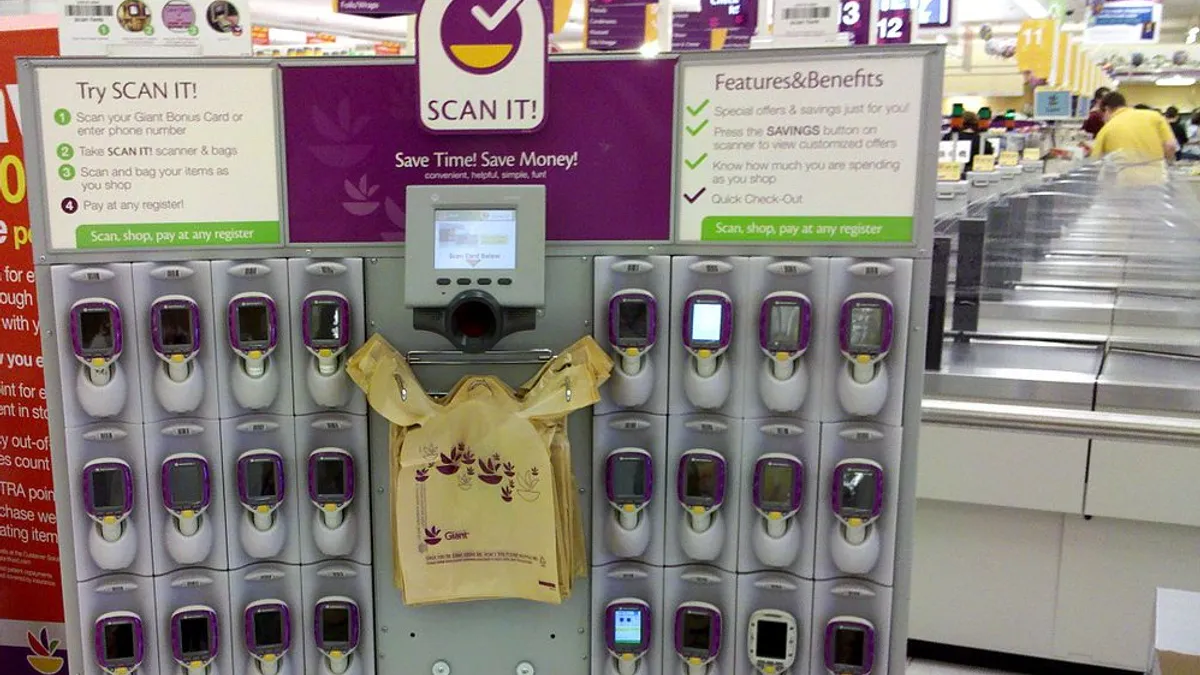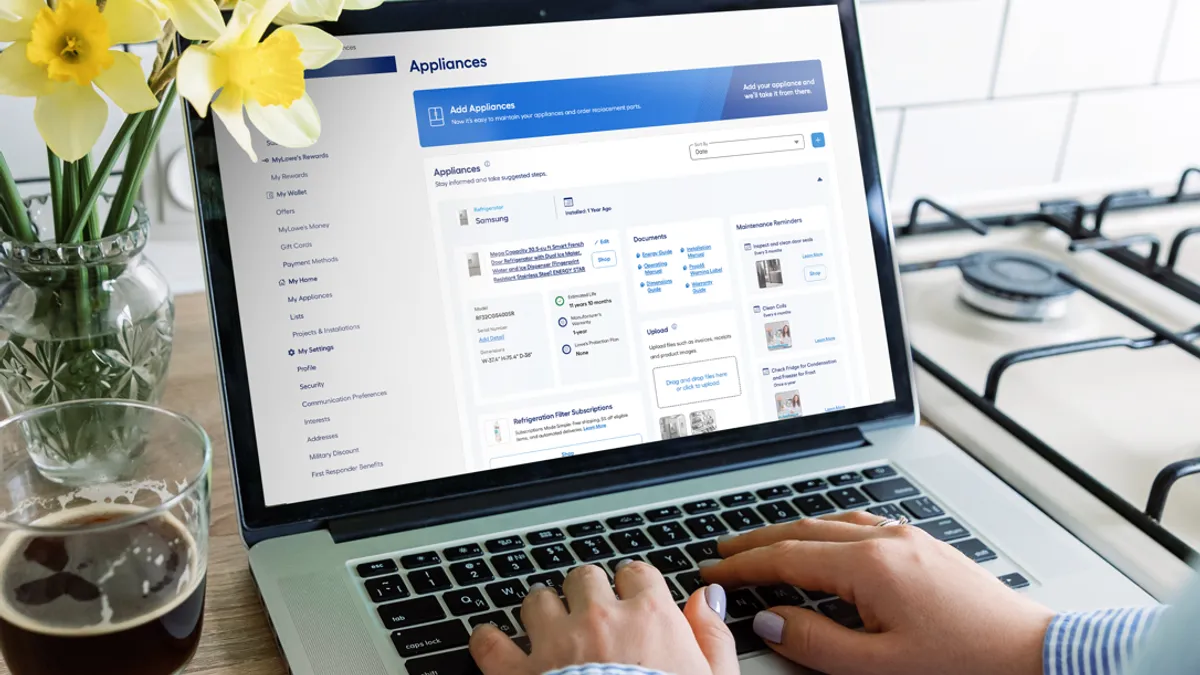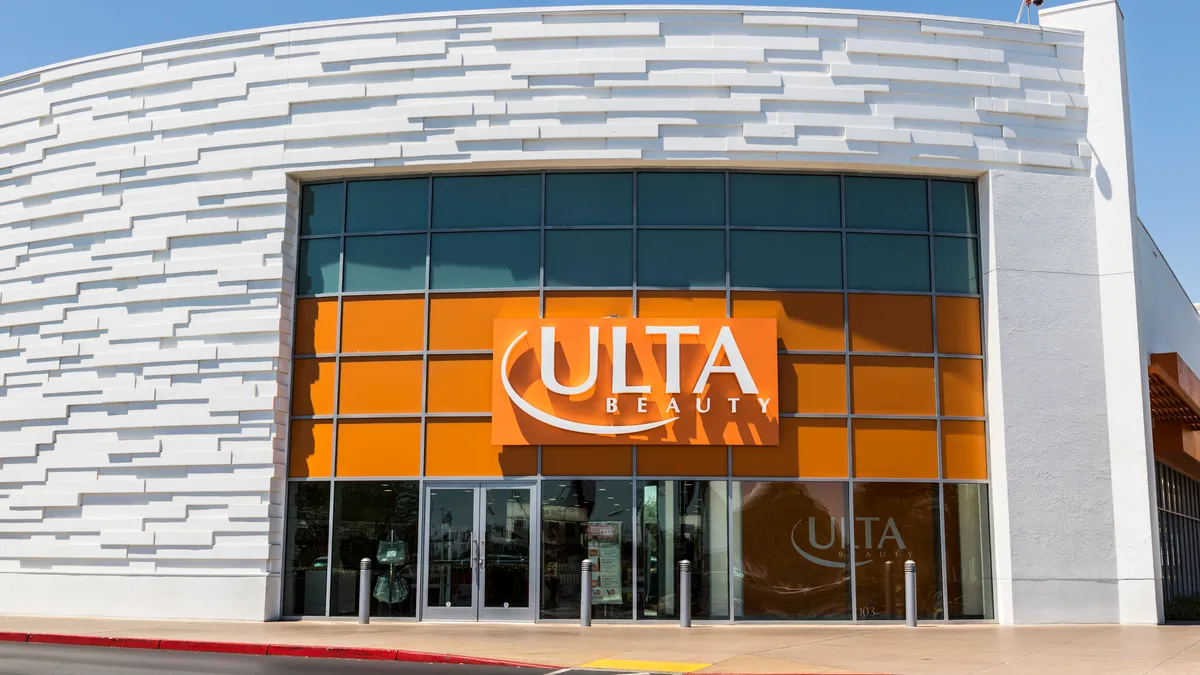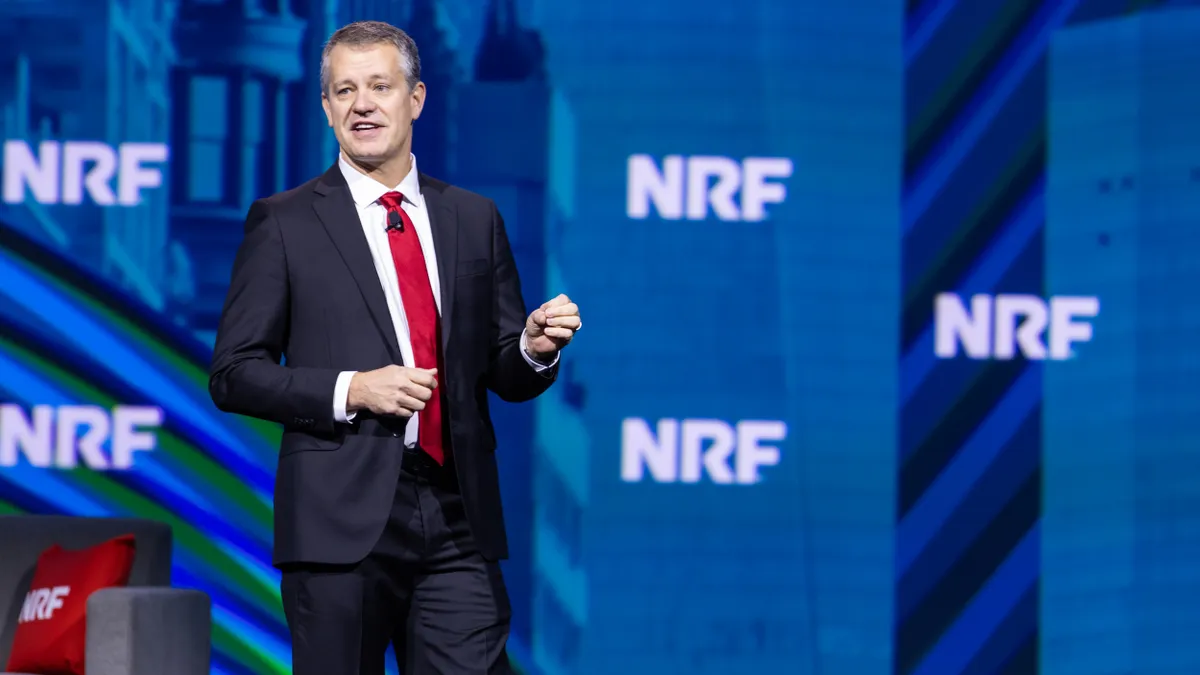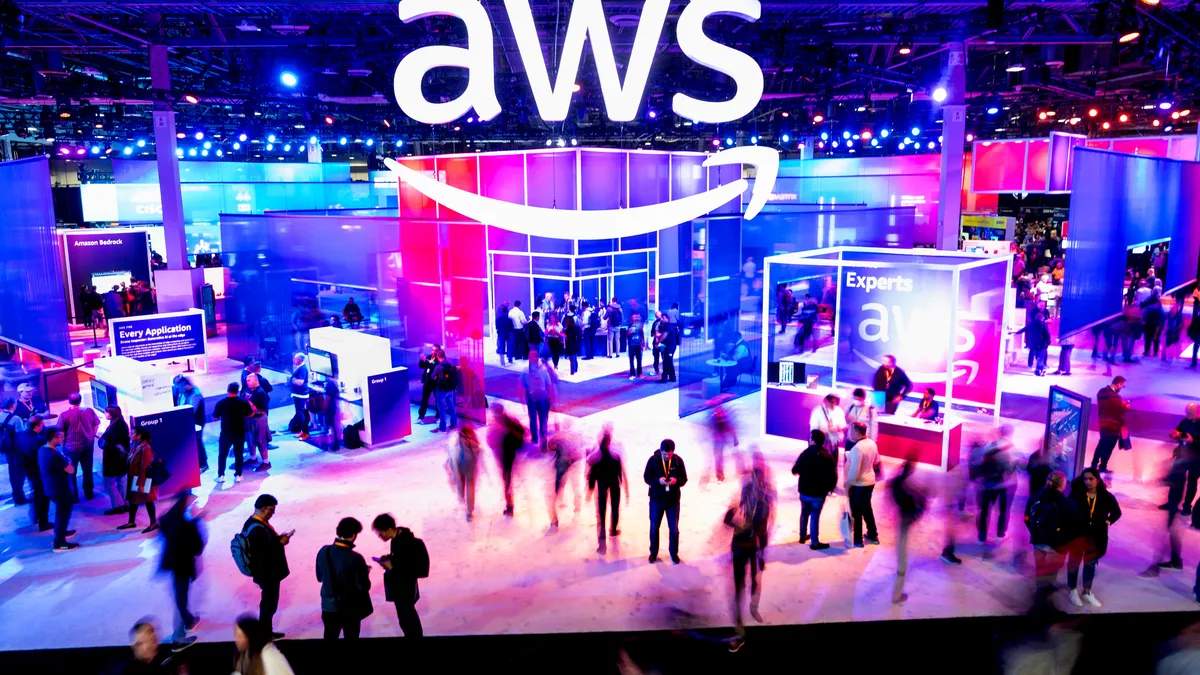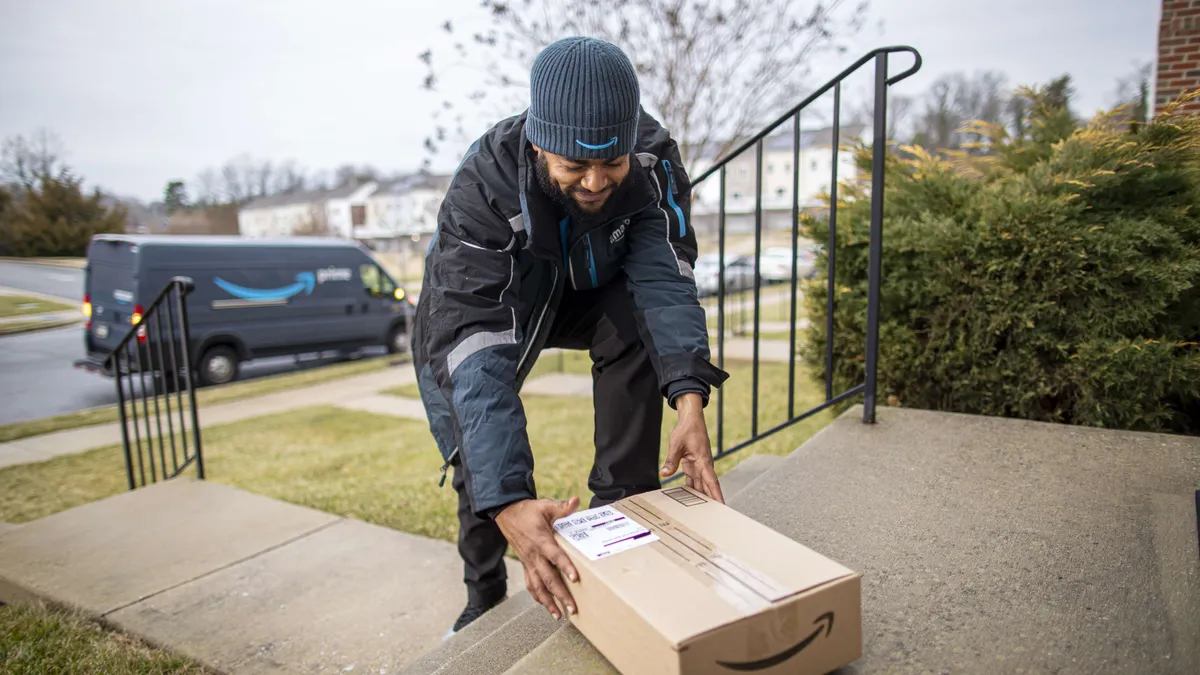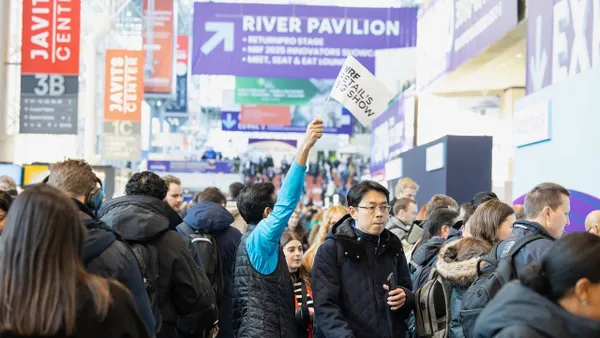For years, retailers have tested ways to rid their stores of one of consumers’ most despised inconveniences — checkout lines.
According to a survey from Harris Poll, 88% of U.S. shoppers want checkouts to be faster, and 50% named slow checkout speeds and long lines as their top grievances when shopping.
Possible solutions to the problem have ranged from reformulating lines to a more queue-like system to granting associates tablets to check out shoppers anywhere in the store.
But what if shoppers are the solution for long checkout lines?
The Cincinnati Enquirer reports that Kroger is testing its new “Scan, Bag, Go” program at 15 stores, where consumers receive personal scanners or use a mobile app on their phone to scan groceries while shopping. After bagging the groceries as they scan them in the aisles, consumers can then pay for the final bill at the front of the store, skipping the checkout line altogether. The program is similar to Giant's Scan It program, which also provides shoppers the option of using their mobile phones to scan items.
Following this announcement, RetailWire, an online retail discussion forum, asked its BrainTrust panel of retail experts the following questions:
- How likely is it that shop and scan devices or mobile apps allowing consumers to use their own devices will catch on in a significant way at retail in the next five years?
- What are the impediments to adoption? What do you see as the opportunity?
Here are six of the most interesting perspectives from that discussion. Comments have been edited by Retail Dive for content and length.
1. First, break the habit
Ken Lonyai, Digital Innovation Strategist and Co-founder, ScreenPlay InterActive: As logical as this seems, adoption will likely be very slow. People are habitual and have been trained to bring their carts to the front, unpack, scan or be scanned and then repack. The only way to move adoption forward faster is to have venues with no other option but to check out this way, meaning no registers.
Until then, the only other speedy check out is another now old concept, item-level RFID tags whereby the entire cart is scanned without removing items that are already bagged as consumers fill the cart.
2. The opportunity is with millennials
Richard J. George, Ph.D., Professor of Food Marketing, Haub School of Business, Saint Joseph's University: The opportunity here lies with Millennials, now the largest U.S. generation. Millennials check their smartphones 45 times per day. They shop for food online more than any other generation. These digital natives do not shop at traditional retailers the way preceding generations did. If brick-and-mortar retailers want them to shop in their stores, the issue of checkout needs to be addressed. The Kroger test should provide some answers.
3. Who’s helping who?
Herb Sorensen, Ph.D., Scientific Advisor, Kantar Retail; Adjunct Ehrenberg-Bass, Shopper Scientist LLC: Adding scanning to the shoppers' aisle-by-aisle trip is never going to extend to more than 10 percent of the shoppers. This has been done by what is now Catalina Mobile since 2001, and has also had fairly wide deployment in Europe. Until something like Near Field Communication (NFC) becomes practical for packaged goods, this is NOT going to happen. (And it will be something like the Apple Watch that does it!) Stop investing hundreds of millions in new ways for shoppers to assist retailers. It's supposed to work the other way around.
4. Eliminate the register completely
Graeme McVie, VP & GM, Business Development, Precima: In order for self-scanning to really catch on, there needs to be an increased focus on the overall experience. The self-scanners I used were fairly rudimentary and didn't offer a lot of additional value over and above the basic ability to scan items. Using a smartphone app that had incremental utility/value, including automatically identifying personalized offers that could be applied to my purchases and presenting health information at the point of scan, would be a step in the right direction. But the most significant step would be to allow a shopper to simply pay on their smartphone and walk out the door without having to even visit a register. If retailers are concerned about the risks of this approach then they could consider phasing it in by initially offering smart phone payment as an option to their most loyal customers before evaluating the impact and expanding the program.
5. Need better solutions to prevent loss
Tony Orlando, Owner, Tony O's Supermarket & Catering: Will the customer scan everything they buy? Unless the RFID chip is on every product, how do you know if they scanned everything?
This sounds good in theory, but I don't see a rush by stores willing to do it.
6. Where’s my paycheck?
Bob Phibbs, President/CEO, The Retail Doctor: Gee, am I on the schedule today? I don't go to a retailer to work for the retailer. They work for me. This is some techie's dream, but no one else's.


